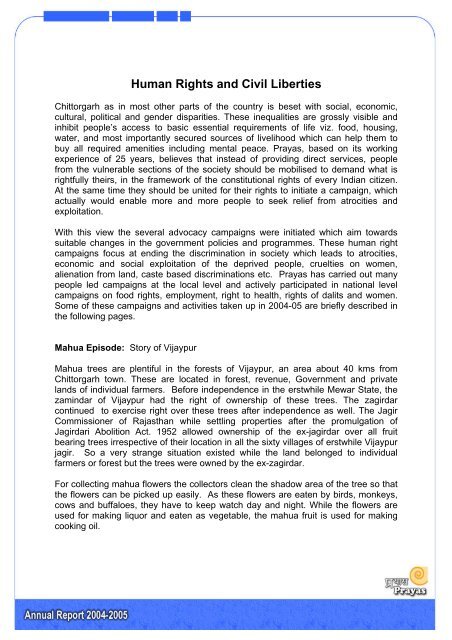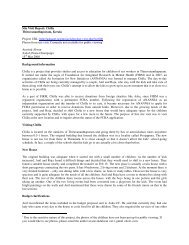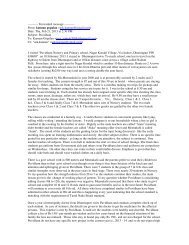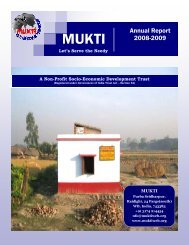Annual Report 2004-05 - Asha for Education
Annual Report 2004-05 - Asha for Education
Annual Report 2004-05 - Asha for Education
You also want an ePaper? Increase the reach of your titles
YUMPU automatically turns print PDFs into web optimized ePapers that Google loves.
Human Rights and Civil Liberties<br />
Chittorgarh as in most other parts of the country is beset with social, economic,<br />
cultural, political and gender disparities. These inequalities are grossly visible and<br />
inhibit people’s access to basic essential requirements of life viz. food, housing,<br />
water, and most importantly secured sources of livelihood which can help them to<br />
buy all required amenities including mental peace. Prayas, based on its working<br />
experience of 25 years, believes that instead of providing direct services, people<br />
from the vulnerable sections of the society should be mobilised to demand what is<br />
rightfully theirs, in the framework of the constitutional rights of every Indian citizen.<br />
At the same time they should be united <strong>for</strong> their rights to initiate a campaign, which<br />
actually would enable more and more people to seek relief from atrocities and<br />
exploitation.<br />
With this view the several advocacy campaigns were initiated which aim towards<br />
suitable changes in the government policies and programmes. These human right<br />
campaigns focus at ending the discrimination in society which leads to atrocities,<br />
economic and social exploitation of the deprived people, cruelties on women,<br />
alienation from land, caste based discriminations etc. Prayas has carried out many<br />
people led campaigns at the local level and actively participated in national level<br />
campaigns on food rights, employment, right to health, rights of dalits and women.<br />
Some of these campaigns and activities taken up in <strong>2004</strong>-<strong>05</strong> are briefly described in<br />
the following pages.<br />
Mahua Episode: Story of Vijaypur<br />
Mahua trees are plentiful in the <strong>for</strong>ests of Vijaypur, an area about 40 kms from<br />
Chittorgarh town. These are located in <strong>for</strong>est, revenue, Government and private<br />
lands of individual farmers. Be<strong>for</strong>e independence in the erstwhile Mewar State, the<br />
zamindar of Vijaypur had the right of ownership of these trees. The zagirdar<br />
continued to exercise right over these trees after independence as well. The Jagir<br />
Commissioner of Rajasthan while settling properties after the promulgation of<br />
Jagirdari Abolition Act. 1952 allowed ownership of the ex-jagirdar over all fruit<br />
bearing trees irrespective of their location in all the sixty villages of erstwhile Vijaypur<br />
jagir. So a very strange situation existed while the land belonged to individual<br />
farmers or <strong>for</strong>est but the trees were owned by the ex-zagirdar.<br />
For collecting mahua flowers the collectors clean the shadow area of the tree so that<br />
the flowers can be picked up easily. As these flowers are eaten by birds, monkeys,<br />
cows and buffaloes, they have to keep watch day and night. While the flowers are<br />
used <strong>for</strong> making liquor and eaten as vegetable, the mahua fruit is used <strong>for</strong> making<br />
cooking oil.
















